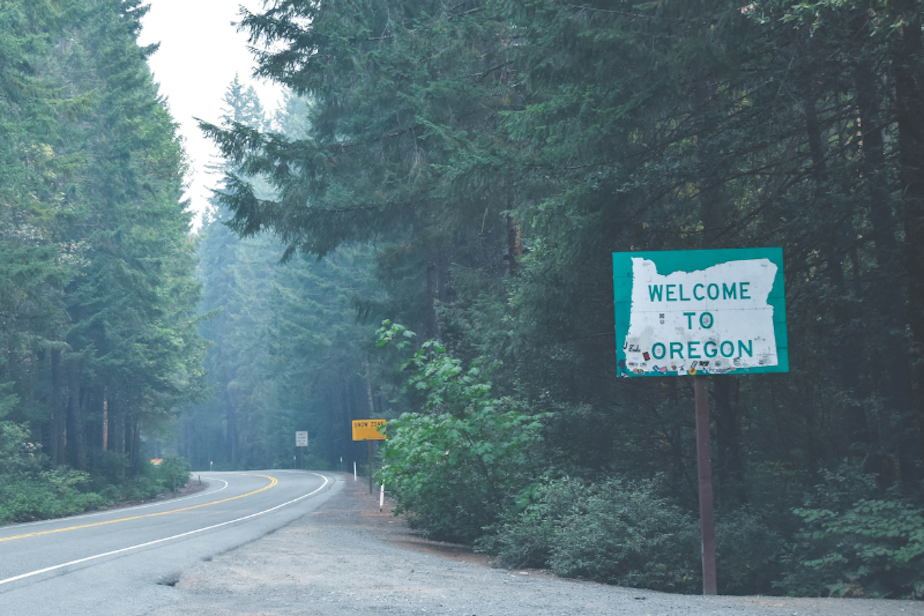Secession movements in the PNW aren't new. But lately, eastern Oregon is feeling Idaho-curious

The “Greater Idaho” movement is on a longshot quest to supersize Idaho by absorbing more than a dozen eastern Oregon counties — a big chunk of Oregon’s territory.
On May 16, Wallowa County, a rural area of northeast Oregon, voted on a ballot measure to require county commissioners to discuss the possibility of moving the Idaho-Oregon state line westward. The vote is still being tallied.
Over the past couple years, 11 other Oregon counties have passed similar ballot measures asking their county commissioners to talk about joining Idaho.
Moving state borders needs approval by the Idaho and Oregon state legislatures, plus an act of Congress.
But “Greater Idaho” spokesman Matt McCaw says there’s a reason the campaign’s message is landing with a lot of rural voters: They feel disenfranchised by Oregon’s political power center, Portland.
Sponsored
"Whatever the Portland metro area decides, statewide, gets implemented across the state of Oregon. And there's nothing really that eastern Oregonians can do about it," McCaw says.
Eastern Oregonians just don't have the population numbers to overcome the west side of the state, and that creates a "mass political tension," according to McCaw.
When it comes to policy, the Greater Idaho movement says statewide ballot measures, like Measure 110 on drug addiction and treatment, reflect the differences between the west and east sides of Oregon. They also illuminate what McCaw says are the "problems of having two different cultures grouped together in the same state."
In 2020, voters passed Measure 110, making the possession of small amounts of drugs like cocaine, LSD, and meth punishable by a civil citation. Supporters say that the measure is in the interest of getting people the drug treatment they need, instead of criminalizing the use of drugs.
"This was an idea that kind of started on the west side of the state. It was a policy that they thought made sense for their communities," McCaw says.
Sponsored
Counties in eastern Oregon, however, overwhelmingly voted against Measure 110.
"But because we're only talking about 400,00 people in eastern Oregon, it didn't matter that every county in eastern Oregon voted against it and said, 'We don't want this policy,'" McCaw says. "The west side of the state passed the measure...with enough votes to overwhelm the east side of the state."
McCaw says supporters of the Greater Idaho movement are also frustrated by gun control legislation that was passed by the Oregon House earlier this month.
When asked why try to change Oregon's borders — instead of just moving to Idaho — McCaw is adamant that it makes more sense for supporters of the Greater Idaho movement to move state lines to get the government they want.
"Self-determination matters," he says. "A core principle in the United States is people having government they want. We vote every two years so that people can say, 'Is this the government we want? Or do we want to change what they government looks like?'"
Sponsored
Other secession movements
Oregon and Idaho aren’t the only states that have toyed with the idea of shifting borders in recent years.
There have been pushes to get some counties in western Maryland to join West Virginia, and activists in parts of Colorado would like to join Wyoming. The list goes on.
What does the rise of secession movements say about the state of our democracy in 2023?
University of Oregon Political Science Professor Joe Lowndes focuses on populism, along with conservatism and social movements in the U.S.
Sponsored
To Lowndes, the Greater Idaho Movement is just as much about political maneuvering as it is about ideology.
"This — partly — is less...of an administrative shift and more of political movement with political ideas and political visions of what people want to see happen," Lowndes says. "And I think at some level, it has strategic value for Republicans in the state legislature in Salem, who right now are actually in the middle of a walkout."
A combination of the walkouts, and the larger ideological movement the Greater Idaho movement represents may be enough to force Democrats in the state legislature and governor's office to move rightward on the issues that conservative activists want to see happen, according to Lowndes.
Listen to the full segment by clicking the play button at the top of this story.





